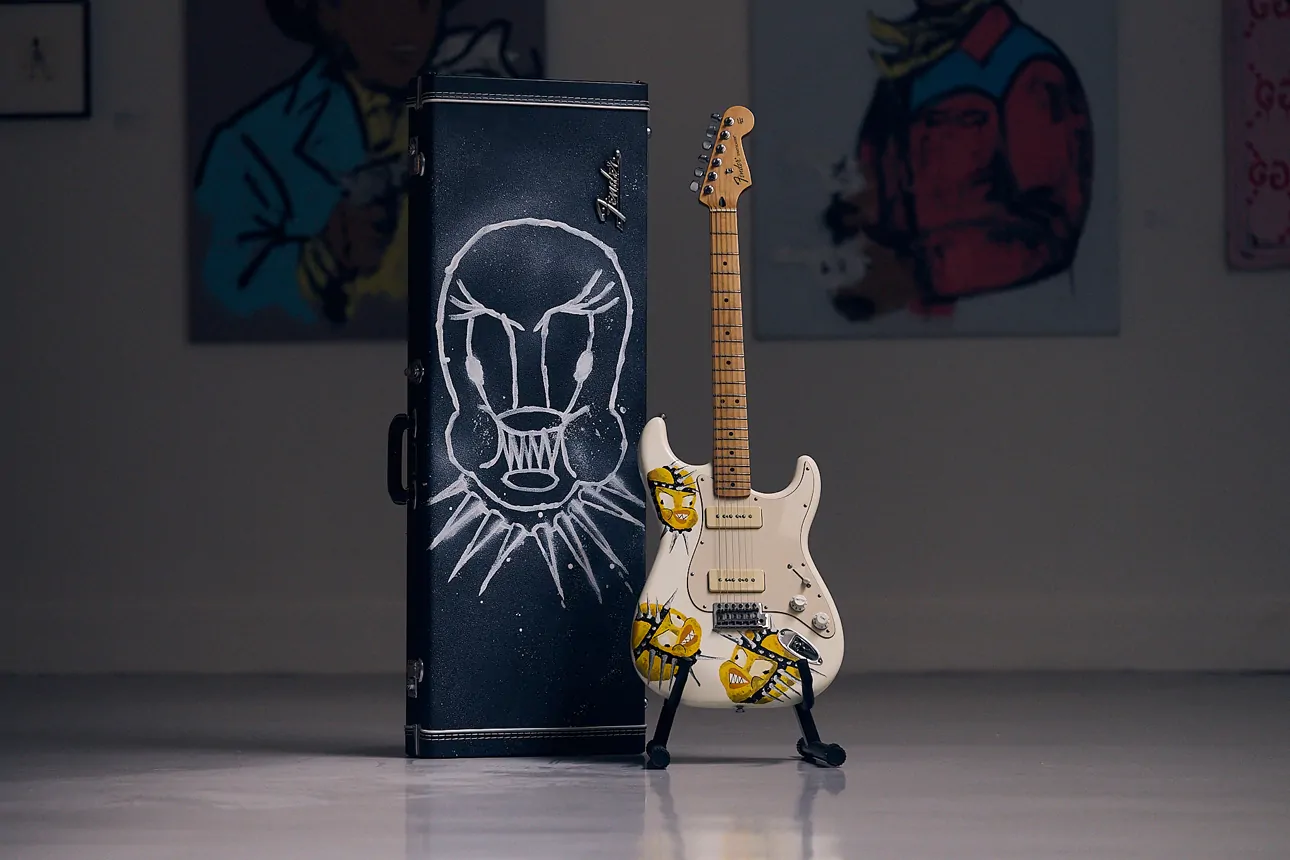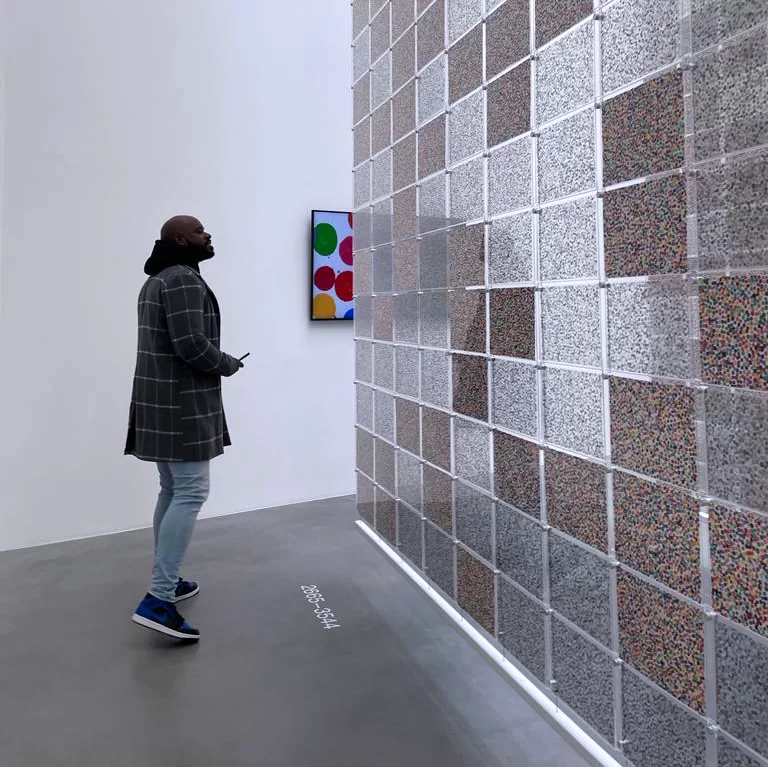From customised Cartier watches to artist-blessed guitars, London’s Pallitt studio is fusing fine art, street culture, and design in a new wave of collectible craftsmanship.
Over the years, the art world has witnessed a quiet revolution — one not led by critics or curators, but by trainers, cereal boxes, and handbags. From Jeff Koons’ collaborations with Louis Vuitton, to Takashi Murakami’s rainbow-hued designs for Kanye West and Uniqlo, and Yinka Ilori’s work with British retailer Marks & Spencer and North Face, the once-rigid walls between art and commerce have split like the Red Seas, giving way to a new form of creative expression where everyday objects become unexpected canvases.
And collectives like MSCHF — who fuse a product line and art practice through satire and commerce — have further opened the door to what art can be in contemporary times, blurring the line between provocation, product, and performance. Let’s not forget also the DTC framework most artists and forward-thinking brands are embracing — a model that bypasses the traditional gatekeepers and allows for a more direct, authentic connection with audiences.
What was once considered the domain of elite collectors is now showing up on skate decks, in trainer drops, and on limited-edition cereal packaging. These collaborations haven’t just made contemporary art more visible — they’ve made it more livable. Art is no longer confined. It’s wearable, holdable, collectable, and, perhaps most importantly, accessible.
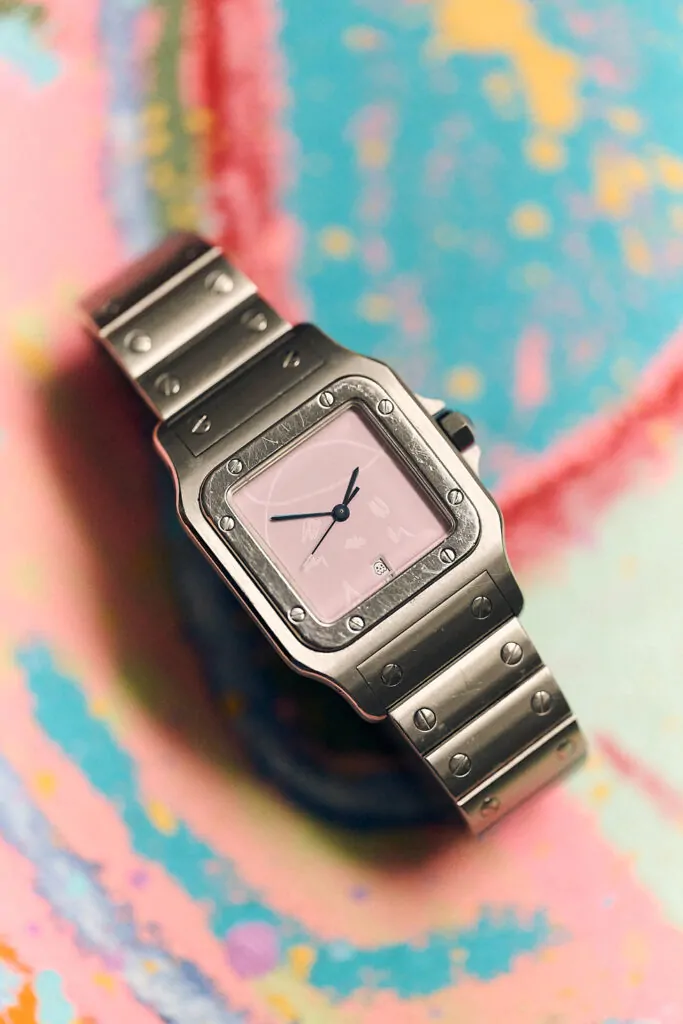
custom Cartier
Image courtesy of Pallitt
Connecting the Dots Between Artists, Brands and Collectors
Pallitt
Enter Pallitt, a London-based studio and creative collective founded by longtime friends — brand and IP specialist Alex Treharne and gallerist Edward Sanders — a pairing that makes for a natural alliance at the helm. Pallitt is part art collective, part luxury atelier, and part cultural disruptor. At its core, the venture is on a mission to reimagine the way we experience and consume art — not on canvas, but on objects you can hold, wear, or pass down.
Pallitt transforms them into singular, hand-crafted pieces of art — customised one-of-ones that exist at the intersection of fine art, pop culture, and high-end craftsmanship.
Pallitt has quickly carved out a niche in this space, transforming recognisable consumer goods into pièces-uniques — one-of-a-kind artworks co-created with a rotating roster of contemporary artists. These objects range from vintage instruments to high-end accessories, each selected not just for aesthetics, but for their cultural and emotional significance.
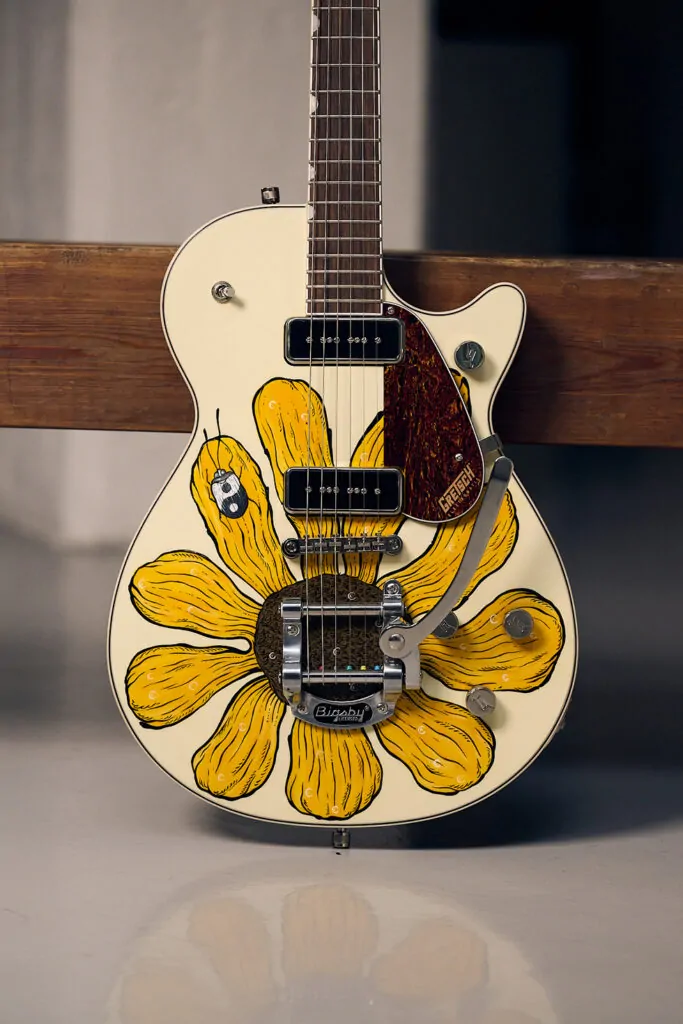
Image courtesy of Pallitt
Pallitt’s magic lies in pairing the right artist with the right object, a curatorial process that feels more like matchmaking than merchandising — where every piece has a story, using the same level of care and craft you’d expect in a traditional fine art setting. Pallitt’s latest rare pieces have seen artist Adam Handler embellish a Cartier Santos with his trademark aesthetic, and Rhondda Valley’s Jacob Taylor bless a guitar with his bewitching blend of the surreal and peculiar.
It’s no coincidence that Pallitt’s rise comes at a time when the art world is undergoing a cultural shift. As younger collectors drive demand for authenticity, individuality, and crossover appeal, traditional boundaries between high art and street culture are collapsing.
With plans to expand their artist roster and unveil new brand collaborations in 2025, the future looks bright — and busy — for Treharne and Sanders. Still, they’re not in a rush to scale. We caught up with the founders to learn what they have in store and what’s next for the studio.

Image courtesy of Pallitt
Pallitt’s concept is truly unique. Could you explain the core idea behind the business and how it came about?
Alex Treharne: Our concept is rooted in the idea of bridging the worlds of art and product in a really creative way. We represent established artists who bring their unique style and vision to these items, making them into something entirely new.
The value of these items is defined not just through their scarcity but through the artist’s direct involvement. We do this both through direct collaboration with brands and makers, but also through customising existing items for collectors – creating 1/1 pieces-uniques. We also make sure that each piece is meticulously crafted – like using the best watchmakers to apply the design to the custom dials, or master craftsmen to make high-end backgammon boards.
Edward Sanders: We’ve always been fascinated by how people consume art. There’s a growing interest in customisation and one-of-a-kind pieces. People are looking for something that speaks to them on a deeper level, and that’s what we’re delivering. It’s a celebration of both the brand, the collectible and the creative. Artists have their own individual ways of interpreting objects, and we allow them to shape these items in ways that give them a fresh identity.
So, you’re not just creating limited editions; you’re taking something already existing and transforming it into something entirely unique. How do you decide which artists to collaborate with and which collectibles to transform?
Alex Treharne: We work with a carefully curated roster of artists, each with their own distinct style. It’s important for us to collaborate with artists who can bring a new perspective to the objects they’re working with. The idea is to pair an artist with a product in a way that feels organic as if the object was always meant to be transformed by them.
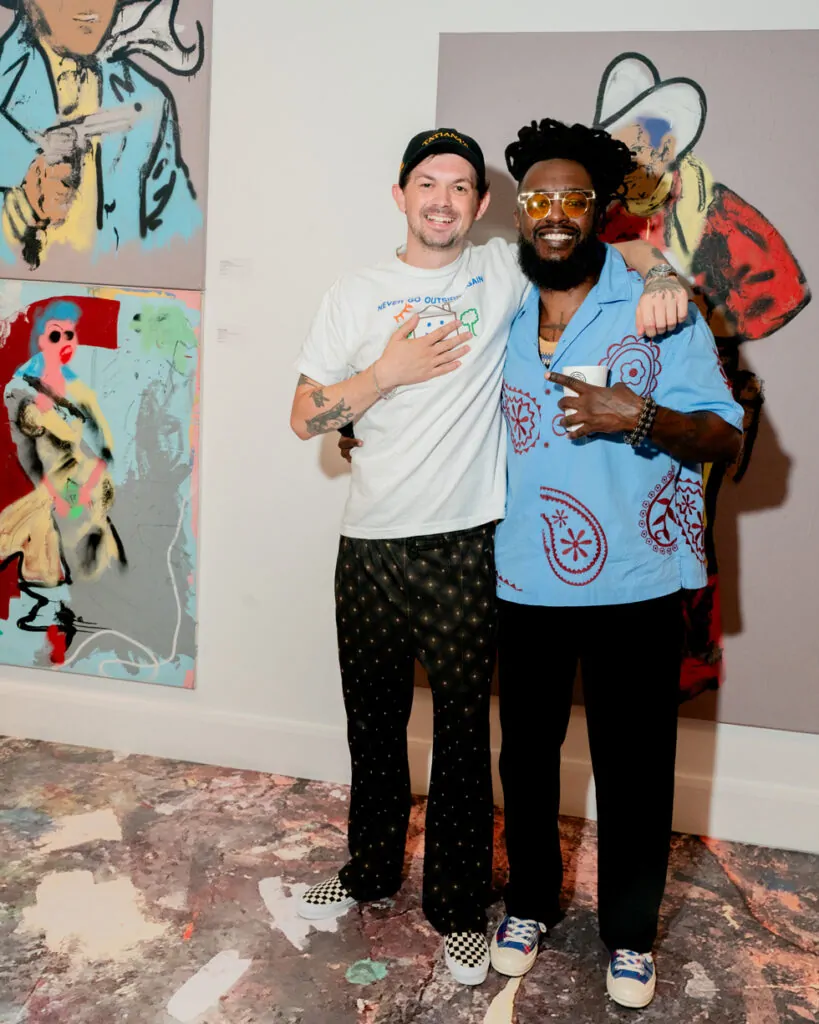
Image courtesy of Pallitt
Edward Sanders: As for the collectibles, we’re always looking for items that have a certain cultural or aesthetic significance. They might be things people already recognise and love like sneakers, vinyl records, instruments or luxury accessories but we want to take them further. We don’t want just to embellish; we want to create something that stands on its own as a piece of art.
You mentioned the word “cultural significance”, do you think the relationship between art and collectibles has evolved in recent years?
Alex Treharne: Absolutely. There’s been a shift in how people view art and collectibles. Collectibles aren’t just toys or limited-edition items anymore, they’re stores of value, stories, and pieces of culture. Seeing how art is now viewed in a much broader sense has been exciting for us. The boundaries of what constitutes art has expanded, and Pallitt is positioned at the intersection of fine art, pop culture, and street culture.
Edward Sanders: People are more informed about art and culture. There’s an understanding now that art isn’t confined to galleries or auction houses, it’s in the streets, in fashion, in music, and yes, even in collectibles. That’s why what we do feels so important. We’re making sure that art is more accessible and integrated into daily life, whilst also offering something that holds true artistic value.
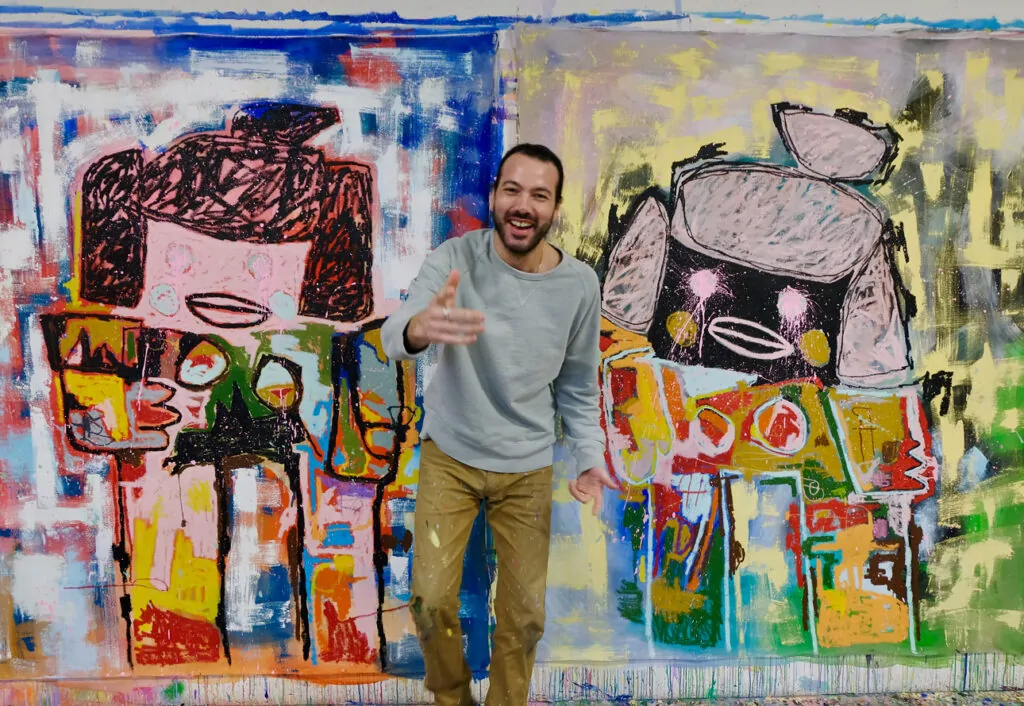
Image courtesy of Pallitt
You’ve worked with several high-profile artists and brands. How important are these collaborations in your approach?
Alex Treharne: Collaborations and Customs are at the heart of Pallitt. Not only do we manage an incredible roster of artists and facilitate these brand collaborations, but we also understand that collaboration opens doors to new audiences. When a brand or artist partners with us, it’s an opportunity to introduce their work to people who might not have experienced it before whilst also providing them with a platform that pushes boundaries.
Edward Sanders: It’s not just about the exposure, it’s about creativity. Every collaboration adds a new layer to our work. Whether it’s a well-known product or brand or a cutting-edge artist, we’re able to push the limits of what’s possible and that’s where the magic happens. These partnerships enable us to take our creations to unexpected places, enriching both the artist’s voice and the object they’re working on.
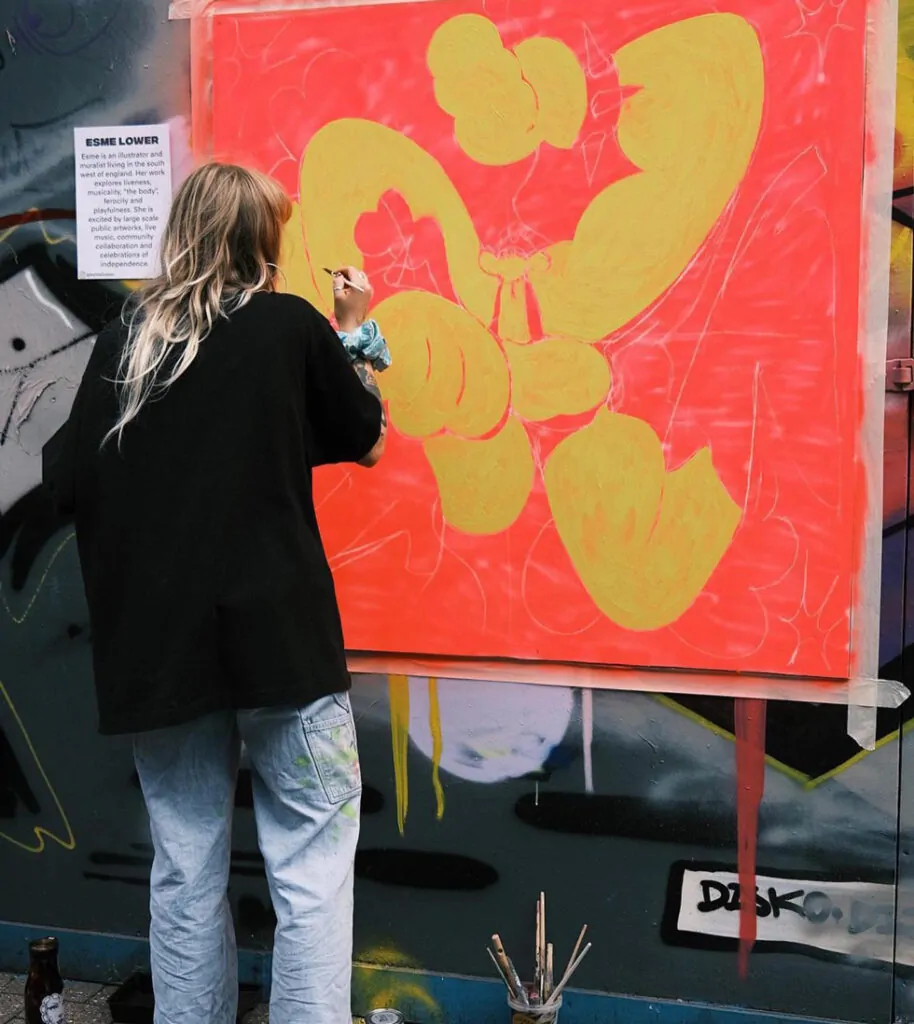
Image courtesy of Pallitt
As a business, you’re clearly blending art, commerce, and culture in an innovative way. Do you think Pallitt is changing the way people perceive art?
Alex Treharne: That’s the goal. Art has always been about connection, and we’re connecting people with art in a way that feels personal and immediate. People are more likely to engage with art when it feels like something they can touch, something they can hold and experience. The traditional barrier of entry to the art world has been removed in a way. We want to bring the experience of owning art to a wider audience without losing the authenticity and value of the art itself.
Edward Sanders: I’d agree with that. We’re opening up opportunities for a broader audience to appreciate art. By mixing collecting culture and contemporary art in a very tactile way, we’re changing how people interact with it. Art doesn’t need to be this untouchable thing that lives in galleries or museums, it can be part of your life, your space, your world. That’s the shift we’re making.
Lastly, what does the future hold for Pallitt? Are there any upcoming projects or collaborations that you’re particularly excited about?
Alex Treharne: We’re always working on new and exciting collaborations, and I think we’ll continue to push the envelope. The world of 1/1 art customs is still so young, and we’re excited about where it’s going. We’ll be expanding our artist roster and working with some really exciting brands and artists in the near future. We also have some amazing new pieces coming up that we think will really turn heads.
Edward Sanders: The future is about continuous innovation for us. We want to keep finding ways to make art more engaging, more exciting, and more integrated into people’s lives. There’s so much potential, and we’re just getting started. So, stay tuned!
To find out more about what Pallitt is working on and how to acquire a unique work or custom for yourself, please visit pallitt.com.
©2025 Pallitt


